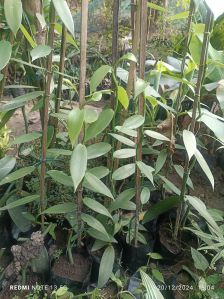
Vanilla Plants
200 - 210 Per Nos
100 piece (MOQ)
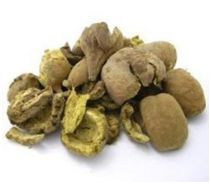
Whole Baheda
Get Price Quote
Beheda-(botanical Name-terminalia Bellirica)-it is More Commonly Known as Bibhitaki. It is Found in India. Their Fruits are Grey But Without Ridges. FORM : Whole, Seedless BENEFITS : Useful in Hair and Hair Loss. Acne and Acne Scars. Oil of Beheda Used for Wound (healing Property)
Best Deals from Medicinal Herbal Plants

Aromatic Leaves Distillation Plant
Get Price Quote
1 Piece (MOQ)
Our plants are designed for giving the Best Quality of oil, Free of burnt odor, Free of moisture and with the Highest yield of oil.Highlighted Features : Fully Integrated Design; Excellent finish & better production; Compact design; Highly durable; Easy to use and operate; Less energy consumption; It gives High yield oil & best quality of oil.

Sweet Marjoram Herbs
Get Price Quote
We make sure that the offered lot complies with the stated quality norms, thus check the product quality on several stages. Our company is capable of delivering consignments on time owing to an efficient trading network we have. We can offer our buyers with direct shipment of Dried Marjoram from EGYPT.Please mail us for complete specification.

Nirgundi
Get Price Quote
In order to meet urgent and voluminous requirements of the customers, we have installed all the in-house facility at our premises. Laced with modern facilities, it helps us in securing the product line from factors like, moisture, dust, sunlight, etc. Supported by an advanced transit system, we have become capable of delivering the orders within promised time.

Lemongrass fresh leaves
Get Price Quote
Lemongrass fresh leaves
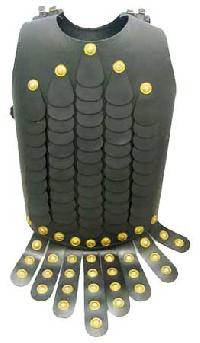
Roman Breastplate Leather A
Get Price Quote
50 Piece(s) (MOQ)
We are listed at the apex in the list of the most staggering Armor Breastplate Exporters in India. The array of the Breastplate also includes Medieval Breastplates and Mightstone Breastplate to meet the specific requisites of the clients. Additionally, customers are provided Wholesale Breastplate at the most advantageous deals.
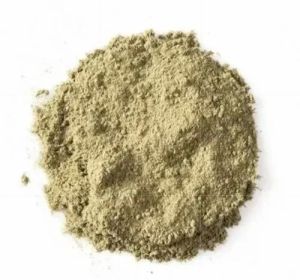
Sage Leaves Powder
Get Price Quote
100 Kilogram (MOQ)

Baheda
17 - 35 Per Kilogram
25 Kilogram (MOQ)

Woodfordia Fruticosa Powder
Get Price Quote
500 Kilogram (MOQ)

Basil Oil
4,800 - 5,100 Per Kilogram
100 kgs (MOQ)
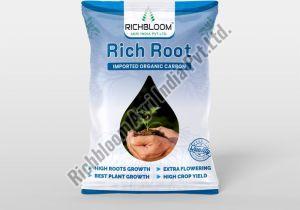
Rich Root
Get Price Quote

Shatavari
Get Price Quote
100 Ton (MOQ)
CULTIVATION Satavar is common throughout the tropical and subtropical regions, particularly central India. It is also found up to an altitude of 1500 m in subtropical Himalayas. By nature, the plant is xerophytic and prefers the semi-arid to subtropical, cool environment.(Ssp group) CLIMATE AND SOIL Soil – black, well drained and fertile soil is good for cultivation. But can be cultivated in loose and medium black soil. Climate- crop responses well to tropical and hot climate The plant prefers annual average rainfall of 600–1000 mm or less, of which 85% is received during July to September. A well-drained fertile sandy-loam to medium black soil, with a pH of 6–8 is best suited for its cultivation with staking support. Satavar can be grown in open land as well as under shade, but very high moisture levels result in rotting of root. PROPAGATION MATERIAL Both seeds and root stumps can be used for propagation. (Ssp group) However, seeds are preferable on account of high production that makes up for low germination percentage in cultivation. Seeds may be collected from March to May when their color changes from red to black. AGRO-TECHNIQUE RAISING PROPAGULES Seeds are sown during the April -may in well-prepared and raised nursery beds containing good amount of FYM (farmyard manure). The beds should ideally be 10 m × 1m in size. Seeds are sown in lines 5 cm apart and covered with a mixture of FYM and soil. The beds are lightly watered at regular intervals using a rose water cane. (Ssp group) PROPAGULES RATE AND PRE-TREATMENT About 7 kg of seeds are required for raising seedlings for 1 hectare of crop. To obtain early and higher germination percentage, presoaking in water is required. Higher germination is also achieved by soaking the seeds in cow urine for 24 hours. The germination commences after 20 days of sowing and is completed in 30 days. PLANTING LAND PREPARATION AND FERTILIZER The land should be given a deep disc plugging, followed by harrowing and leveling. The field is normally divided into plots, keeping one irrigation channel in between two rows of plots. About 10 tones of well-decomposed FYM are thoroughly mixed in the soil one month before transplanting. Shatavar. A fertilizer dose of 40 kg nitrogen, 20 kg phosphate, and 20 kg potash per hectare may be applied for better growth and higher tuberous root yield. One-third of nitrogen and entire dose of phosphate and potash should be placed 10–12 cm deep in the rows before transplanting TRANSPLANTING AND OPTIMUM SPACING The seedlings are ready for transplanting after 50-60 days of sowing. These are transplanted in field at the onset of monsoon in July. (Ssp group) Keeping the plant-to-plant distance at 60 cm. Optimum number of seedlings required per hectare using the recommended spacing is about 150000. INTERCROPPING SYSTEM Satavar is normally grown as a monocrop, but it can be grown in inter spaces available in orchards having low light interception. Plants need staking material, thus poles or shrubs serve for support. IRRIGATION AND INTERCROPPING The field is irrigated immediately after planting if there are no rains for 2-3 days. Satavar can be grown in rain-fed condition as well as irrigated. (Ssp group) On availability of irrigation water irrigation at the interval of 25-30 days may be given. Frequent weeding is required during its early period of growth. Care should be taken to avoid any damage to growing shoots at the time of weeding. Totally, about 2-3 hand weeding is needed to keep crop free of weeds. INTERCULTURAL AND MAINTENANCE PRACTICES The balance two-third N is applied in two equal split doses during September and in late February. The fertilizer is broadcast in between the rows and mixed in soil Followed by irrigation, if the soil is dry. Satavar initially grows slowly for 60 days, which keeps inter-row space virtually vacant, allowing easy weed growth. It is necessary to carry out weeding and hoeing operations to keep the field free from weeds for initial two-month period. (Ssp group) After two months, Satavar grows enough to cover the inter row spaces and prevents weed growth. DISEASE AND PEST CONTROL No serious insects, pests, and disease have been reported in this crop. PLANT PROTECTION No serious pest and disease has been noticed in this crop HARVESTING CROP MATURITY & HARVESTING The crop matures in 18 months after planting. Rabi season, that is, November– December, is the best time for harvesting tuberous roots when the above-ground parts start turning pale yellow. The crop, when harvested in 18 months, yields about 4–5 tones/hectare, while harvesting after 20 months yields about 6tones/hectare of tubers along with 35 kg hectare of seeds. YIELD & COST OF CULTIVATION The tuberous root yields 15%–20% of dry matter after removal of outer wall. An average shade-dried tuberous root yield of 4-5 tons per hectare is obtained from 18-month-old plants under experimental conditions. Including land preparation, nursery rising, cost of planting material, FYM, cost of transplanting, harvesting, peeling and processing for market, and so on. (Ssp group) The calculated yield of 18- month-old crop of Satavar is 4-5 tones/hectare, which can fetch net returns of approximately Rs 1-1.25 laces/hectare. POST HARVESTING The harvested toots are thoroughly washed preferably in flowing water, Thereafter, inner woody threads are removed by splitting the roots. The thin root barks are removed by scraping with a knife or incising them. In the traditional method, the roots are also kept in a bamboo basket on a pot of boiling water for five to ten minutes to facilitate easy removal of thread and root bark. But this method is really not required when freshly collected roots are peeled off. The roots are then dried in the shade for 8-10 days. The fresh roots lose about 90% of their weight after peeling and drying. In case of delay in peeling, it becomes extremely difficult later on. Value addition of root powder enhances marketability and sale and price. The roots get damaged within 3 to 4 months if threads in not immediately removed. YIELD Average yield per acre is 2000 kg dried roots. SERVICES This expenditure is an one-time expenditure and one time production only Production starts in 18th month. (Ssp group) This includes Supervision, consultancy, guidance, Transportation cost first year. Buy back Agreement of Satavar dry roots. Satavar growing first harvesting practical training. TERMS AND CONDITIONS OF COMPANY For 1 Acre plantation the cost of Plants is Rs. 90,000/-, out of which 50% i.e. Rs. 45, 000/- has to be paid before the cultivation and the remaining half after the planting is done. The Buy Back Agreement Stamp paper of Rs.100/- has to be stamped by District Court of your area. For 10 Acre or more yield the buy Back Agreement Stamp Paper will be of Rs.500/-.

Safflower Petals
1,250 - 1,650 Per kg
100 Kilogram (MOQ)
Health Benefits: 1. Lowers Cholesterol 2. Prevents hardening of arteries 3.Acts as a blood thinner and prevents clots under medical supervision 4. It treats rheumatism and Paralysis, vitiligo, black spots, Psoriasis

Senna Extract
450 Per Kilogram
25 Kilogram (MOQ)
Pharmacological effects Diarrhea hot line stagnation, constipation, diuresis. for the Heat, constipation, abdominal pain, edema. And a certain anti-bacterial function

Dried Giloy Roots
40 - 60 Per Kilogram
200 KGS (MOQ)
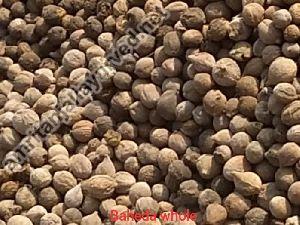
Baheda Terminalia Bellirica
50 - 55 Per Kilogram
100 Kilogram (MOQ)

Senna Extract
Get Price Quote
8 Ton (MOQ)

Insulin Plant
30 Per Piece
10 Piece(s) (MOQ)

Nirgundi Dry Leaves
65 - 75 Per kgs
25 Kg (MOQ)
Dry Nirgundi Leaves
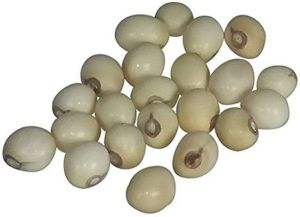
White Gunja Seed
1,000 - 11,100 Per Kg
100 Kg (MOQ)

Dried Brahmi
Get Price Quote

Lemon Grass Plant
1 - 3 Per Kilogram
Cymbopogon, also known as lemongrass, barbed wire grass, silky heads, Cochin grass, Malabar grass, oily heads, citronella grass or fever grass, is a genus of Asian, African, Australian, and tropical island plants in the grass family.

Lemon Grass
70 - 99 Per Kilogram
100 Kilogram (MOQ)

Adusa Powder
130 - 140 Per Kilogram
25 Kilogram (MOQ)
Adulsa has antibacterial, anti-inflammatory, expectorant, and blood purifying qualities. Useful in stopping abnormal bleeding due to vitiation of pitta, through the mouth, nose, genitals, or the urinary systems. Useful in treating respiratory and digestive problems.

Asparagus Racemosus
Get Price Quote
50 Kilogram (MOQ)

Ashwagandha Plant
Get Price Quote
300 Piece (MOQ)
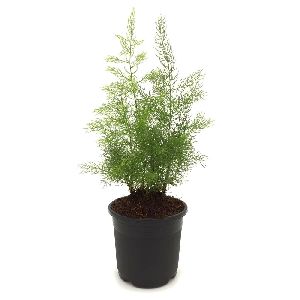
Shatavar Plant
2 - 2 Per pieces
10000 Piece (MOQ)
Women use shatavari to treat conditions related to hormone imbalance such as polycystic ovarian syndrome ( PCOS) and infertility. Reduce symptoms of menopause. A small study showed taking an herbal mixture that included shatavari significantly reduced hot flashes.

Shatavari Plant
3 Per Piece

tulsi herbs
50 - 250 Per Kilogram
1 Container (MOQ)
Exporting Tulsi (also known as Holy Basil) products can be a profitable venture, given its significance in traditional medicine and its increasing popularity worldwide. Here are some detailed specifications and considerations for exporting Tulsi products: Uses And Benifits: Botanical Name: Ocimum sanctum Common Name: Tulsi (Holy Basil) Product Forms: Tulsi can be exported in various forms, including: Dried Tulsi Leaves: Whole or powdered. Tulsi Essential Oil: Extracted from Tulsi leaves and used in aromatherapy, cosmetics, and pharmaceuticals. Tulsi Extracts: Concentrated forms of Tulsi for medicinal purposes. Tulsi Tea: Dried Tulsi leaves packaged for tea consumption. Tulsi Capsules or Tablets: Herbal supplements containing Tulsi extract or powder. Tulsi Herbal Cosmetics: Skincare and haircare products infused with Tulsi extracts or oil. Quality Standards: Ensure that the Tulsi products meet the quality standards set by international regulatory bodies and industry organizations. This may include: Packaging Sizes: Choose packaging materials that provide protection from light, moisture, and physical damage. Common packaging options include: Airtight, moisture-resistant pouches for dried Tulsi leaves. Amber glass bottles for Tulsi essential oil. Sealed containers for Tulsi extracts, capsules, or tablets. Tea bags or loose-leaf packaging for Tulsi tea.